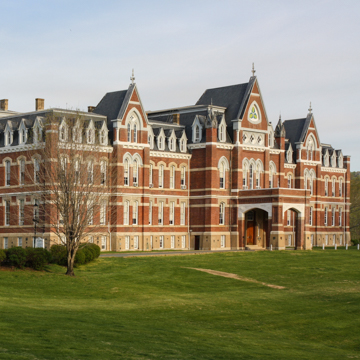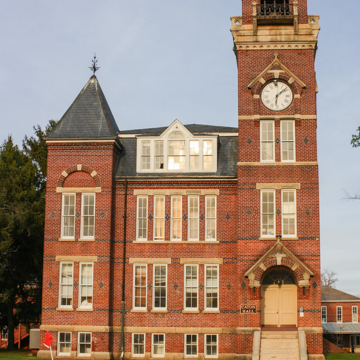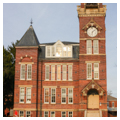One of central Virginia's few examples of Ruskinian Venetian Gothic, the Miller School, with its polychrome brick and weighty scale, recalls English “redbrick” universities. The will of Samuel Miller (1792–1869), who was born nearby and who amassed a considerable fortune in tobacco and agricultural commodities, provided for the establishment of an institution for the education and maintenance of the orphaned and poor children of Albemarle County. The result was a school devoted to industrial arts and manual labor. Construction began on a 1,000-acre farm in 1874 and continued for the next twenty years. The first students entered in 1877. The school became coeducational in 1884. It remains a thriving institution, and its student body is no longer restricted to the disadvantaged. The central block is enormous and richly detailed. The interior still retains many details.
You are here
Miller School of Albemarle
If SAH Archipedia has been useful to you, please consider supporting it.
SAH Archipedia tells the story of the United States through its buildings, landscapes, and cities. This freely available resource empowers the public with authoritative knowledge that deepens their understanding and appreciation of the built environment. But the Society of Architectural Historians, which created SAH Archipedia with University of Virginia Press, needs your support to maintain the high-caliber research, writing, photography, cartography, editing, design, and programming that make SAH Archipedia a trusted online resource available to all who value the history of place, heritage tourism, and learning.









